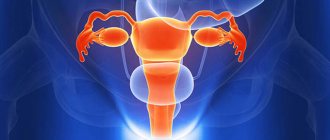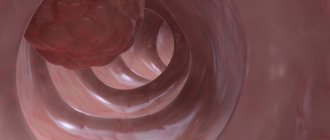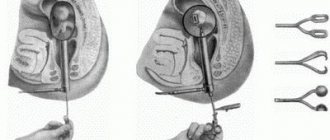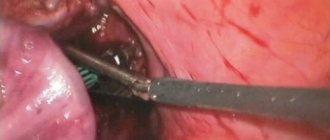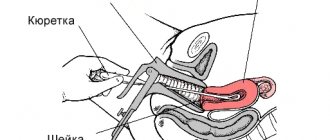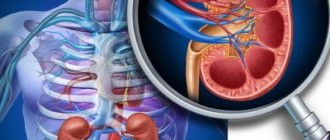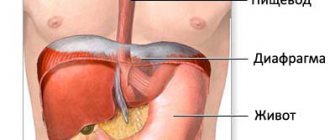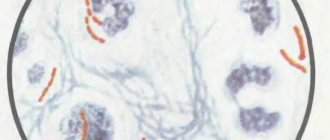Stomach diseases of an inflammatory and tumor nature are quite common, and more and more of them are registered every year. In many ways, the increase in the frequency of pathology of this organ is associated with the nutritional characteristics of modern man and his lifestyle. Among patients with gastritis or polyps in the stomach, you can often find young people, and the possibility of malignant transformation of these processes forces endoscopic examination of a fairly large number of people.
Polyps in the stomach are a fairly common occurrence among people of different ages, and they account for up to 10% of all benign neoplasms of the organ.
Detection of them even in asymptomatic cases has become possible thanks to fibrogastroscopy for a wide range of people with gastrointestinal pathology. Having received this research result, many patients wonder: is it dangerous? Do we need to take immediate action or is simple observation sufficient? There is no definite answer, since the doctor’s further actions will depend on the structure of the polyp: if it is hyperplastic, you can wait, if it is adenomatous, you can definitely remove it due to the risk of malignant transformation.
Polyps are tumor-like growths of the mucous membrane that protrude into the lumen of the stomach. Among patients with this diagnosis, mature and elderly people predominate, although they can also be detected in young people and even children. Men are more susceptible to the growth of polyps, in whom the neoplasm is diagnosed almost twice as often.
The favorite localization of the polyp is the pyloric and antral parts of the stomach, although growth is possible in the body area, in the cardiac part, where polyps are more dangerous due to the high risk of malignancy (malignancy). The polyp can be single, but more often there are several. Total damage to the stomach (polyposis) is quite rare, but is considered a precancerous process in which a malignant tumor develops in almost all patients.
Since theoretically every tenth polyp can sooner or later become stomach cancer, this process requires a lot of attention from both the patient and the doctor. Modern treatment methods make it possible to quickly and effectively get rid of the tumor, and patients must carefully monitor their health and lifestyle to avoid its reappearance.
Causes of polyps
The appearance of polyps is influenced by several factors. Benign formations in the stomach occur in people with chronic gastritis and duodenal ulcers. Lifestyle also influences the development of pathology. If you have bad habits, including smoking and alcoholism, the risk of the disease increases. Improper nutrition negatively affects the functioning of the gastrointestinal tract and contributes to the appearance of tumors.
Long-term use of antibiotics and other strong medications contributes to the appearance of benign tumors. The cause may also be genetic predisposition.
Based on the number of growths there are:
- single polyps;
- multiple polyps;
- gastric polyposis (more than 20 polyps).
According to the clinical course, some Soviet scientists identified the following forms of gastric polyps:
- asymptomatic form;
- gastritis form;
- anemic form;
- complicated form (bleeding of the polyp and its prolapse into the duodenum);
- combined form (the appearance of a polyp and stomach cancer).
Based on endoscopic features, four types of gastric polyps can be distinguished:
- Type I - flat, raised, with indistinct edges;
- Type II - protruding, semicircular, with fairly clear boundaries;
- Type III - clearly protruding, rounded, with a retracted base;
- Type IV - pedunculated.
All of the above classifications deserve attention. However, in practice, the most important classification is based on the signs of degeneration of polyps into a malignant tumor [1][3].
According to the WHO classification, benign stomach tumors are defined as adenomas (adenomatous polyps). They are divided into papillary and tubular forms. Hyperplastic polyps are separately identified and included in the group of tumor-like processes [2][10].
In 2010, the British Society of Gastroenterology proposed its classification of gastric polyps, and also developed recommendations for patient management for each type of gastric polyp. According to this classification, gastric polyps are divided into five groups:
- Fundic gland polyps.
- Hyperplastic polyp.
- Adenomatous polyp.
- Hamartomatic polyps (associated with developmental defects):
- juvenile polyp;
- Peutz-Jeghers syndrome;
- Cowden's syndrome.
- Polyposis syndromes (nehamartoma):
- juvenile polyposis;
- familial adenomatous polyposis.
Fundic gland polyps are cystic expansions of the stomach's own glands and account for 16-51% of benign polyps. They usually reach 1-5 mm in diameter and are located mainly in the body or fundus of the stomach. They have a smooth, even surface, can be lobulated, and are covered with an unchanged mucous membrane. They can appear as an independent disease or as part of familial adenomatous polyposis of the colon.
Not associated with gastritis and Helicobacter pylori infection. They can form due to long-term use of proton pump inhibitors (drugs that reduce the production of hydrochloric acid). These medications increase the activity of gastrin (a stomach hormone), which stimulates the growth of epithelial cells.
The average development interval for fundic gland polyps is 32.5 months. Regression occurs three months after stopping taking proton pump inhibitors [4][7].
Hyperplastic polyps account for 30-93% of benign gastric polyps. It can be sessile and pedunculated, less than 2 cm in diameter. It is characterized by enlarged gastric pits, dilated and tortuous glands, and chronic inflammation of the gastric mucosa. A single polyp is most often located in the antrum (lower) part of the stomach. Multiple polyps can occur in all parts of the stomach.
Associated with chronic (Helicobacter-associated), chemical and atrophic gastritis. It occurs due to increased cell renewal (their layering on top of each other) in response to damage to the gastric epithelium (usually with erosions or gastric ulcers).
The hyperplastic polyp itself rarely becomes malignant (malignant), but it increases the risk of malignancy of the surrounding inflamed stomach tissue. Therefore, when a hyperplastic polyp is detected, it is recommended to perform a biopsy of the surrounding tissue (from 4-5 different places) [4][5].
Adenomatous polyp is a precancerous disease with a high potential for degeneration into cancer, especially when the polyp is more than 2 cm. It accounts for 3-26% of gastric polyps. Usually single, can be localized in any part of the stomach, but is more often found in the antrum (lower part of the stomach). The structure is tubular, villous and mixed. It occurs against the background of atrophic gastritis and intestinal metaplasia (when the gastric epithelium is replaced by intestinal epithelium) [4].
It is worth noting that in one study at the Vitebsk Regional Clinical Hospital, a hyperplastic polyp with areas of adenomatosis was found. The authors suggested that hyperplastic polyps can transform into adenomatous ones. They also allowed themselves to identify another histological form of polyps - a hyperplastic polyp with focal adenomatosis. It is a true benign tumor of the stomach, capable of developing into cancer [10].
Hamartomatic polyps are rare, but it’s worth saying a few words about them.
A single juvenile (youthful) polyp has no malignant potential, but, like all polyps, it can be complicated by bleeding or strangulation, since such polyps are mainly located in the lower part of the stomach and are susceptible to trauma.
Peutz-Jeghers syndrome is a rare hereditary disease that is accompanied by the appearance of hamartomatous polyps in the gastrointestinal tract, as well as pigmentation in the lips, fingers and buccal mucosa. With this disease, there is a high risk of malignancy of both the digestive organs and the lungs, mammary glands, pancreas, and uterus. Therefore, such patients should be closely monitored.
Cowden's syndrome is a rare hereditary disease that is accompanied by the presence of polyps of the gastrointestinal tract, benign tumors of the mouth, as well as malformations of various organs (breast, thyroid and genitals). Polyps with this syndrome very rarely degenerate into cancer, but still require observation.
Polyposis syndromes include juvenile polyposis and familial polyposis syndrome.
In juvenile polyposis, many juvenile polyps are found that have malignant potential. This disease can also be complicated by gastrointestinal bleeding and enteropathy, a disease of the small intestine that is accompanied by loss of protein and other nutrients.
Familial polyposis syndrome is a hereditary disease with a very high risk of cancer of the stomach and other parts of the gastrointestinal tract. Affected family members have a large number of colonic and rectal adenomas, which have a 100% chance of developing into cancer unless a prophylactic colectomy—complete removal of the colon—is performed. Gastric polyps are detected in 30-100% of cases. This syndrome does not have a clear connection with gastritis caused by Helicobacter [4].
Specific stages of disease development are not distinguished, since different types of polyps have different origins and development. But if we talk about frequently occurring adenomatous and hyperplastic polyps, then we can conditionally distinguish three stages of development [1]:
- polypous gastritis (inflammation or atrophy of the gastric mucosa);
- stomach polyp;
- stomach cancer.
Carrying out the procedure
Before endoscopic polypectomy, the patient undergoes a comprehensive examination of the body, including ultrasound diagnostics. The patient is sent for testing. On the eve of surgery, you should follow a strict diet, give up alcohol and smoking.
Also, before the procedure, blood pressure, pulse, and general health are monitored. Removal of a polyp tumor is carried out under anesthesia using medicated sleep (sedation). A gastroscope is used, which captures the loop with the tumor. The procedure is absolutely painless for the patient and does not require rehabilitation. A few hours after recovery from anesthesia, the patient goes home.
Treatment of polyps in the stomach with folk remedies
The appearance of polyps signals problems in the body, the accumulation of waste and toxins. Treatment of a benign tumor in the stomach must begin with normalizing nutrition and cleansing the body.
Products are added to the diet that help reduce the number of tumors and improve the quality of life. These are carrots, garlic, viburnum, onions, pumpkin, spinach.
Sprouted wheat and seaweed must be present in the daily menu of people suffering from polyps.
For therapy to be effective, you should avoid canned and refined foods, white bread, sweets, milk and all dairy products. The combination of traditional methods with proper nutrition gives a positive result in the treatment of polyps.
Decoctions and infusions
- Celandine is considered one of the main remedies in the treatment of gastrointestinal diseases. The tincture has anti-inflammatory, antitumor, wound-healing, and bactericidal effects. This is a poisonous plant; uncontrolled use can lead to poisoning . To prepare the infusion, 1 tsp. crushed herbs are steamed with a glass of boiling water and left for 2-3 hours. Take 20 ml 4 times a day. The course of treatment is 1 month, then take a break for 7 days and repeat the treatment solution.
- Thuja has antibacterial, antiallergic properties, promotes the resorption of tumors. The branches are poured with vodka in a ratio of 1:9 and left for 2 weeks in a dark place. The infusion is consumed 1 tsp. within a month. A month later the course is repeated.
- Kalina. Berries must be picked before frost, otherwise they lose some of their nutrients. In autumn, you should eat a handful of berries throughout the month. In winter, prepare a decoction: 4 tbsp. l. dried product, pour 0.5 liters of boiling water, cook for 30 minutes. The drink is drunk in 3 doses during the day.
- Wormwood acts as a natural antibiotic. It helps especially well with polyps that are bacterial in nature. In addition, it is able to stop the degeneration of benign tumors into malignant ones. Both fresh herb and infusion have healing properties - 1 tsp. l. crushed herbs, pour 200 ml of boiling water and leave for 20 minutes. Drink during the day.
- Burdock. Use the roots of a fresh plant. Finely chop it and boil for 5–7 minutes. Drink daily for two months, like regular water.
- White lilac. Two or three branches, along with leaves and peduncle, are steamed with 0.5 liters of boiling water, wrapped well and left for 10 hours. The infusion is consumed in the morning and evening before meals, 100 ml. Course – 2 months.
- Sophora japonica has powerful regenerating properties. Recommended for use for all types of tumors. For medicinal purposes, alcohol tincture is used. To prepare, you need to chop the fresh fruits of the plant, pour 40% vodka in a 1:2 ratio. Leave in a dark place for 10 days. Filter the resulting infusion. Take 25 - 35 drops 3 times a day. Course – 30 days, break 10 days.
Preparation for the procedure
Before the procedure, the patient should quit smoking. It is advisable to take plenty of drinking water. It is important to follow a strict diet, eliminating fatty and floury foods. It is also advised to exclude foods that contain fiber. This substance affects the volume of the large intestine.
To cleanse the intestines, the patient is given an enema or prescribed laxative medications. A complete examination of the gastrointestinal tract will be required. The patient undergoes endoscopic examination and ultrasound diagnostics. You need to take a blood clotting test and determine your Rh factor.
Immediately before the procedure, the patient’s blood pressure is measured and the pulse is checked. The doctor should be interested in the patient's condition.
Manifestations and methods of identifying gastric polyps
The insidiousness of polyps lies in their frequent asymptomatic course, when the tumor grows and the patient does not even suspect its presence. Since polyps usually form in the presence of gastritis or ulcers, symptoms are often associated with these diseases. Typically, patients are bothered by a dull pain in the abdomen, nausea, belching, and a feeling of fullness in the stomach after eating. If the polyp becomes inflamed and eroded, the pain intensifies.
A certain danger is posed by polyps of the pyloric and antrum on a long thin stalk, which can hinder or completely stop the movement of food masses into the duodenum. The patient will feel severe pain in the abdomen and vomit the food eaten the day before. If a formation is pinched in the area of the gastric outlet, severe cramping pain will appear, which will force you to immediately seek help.
Sometimes polyps cause gastric bleeding, which, however, is rarely massive. Usually there is constant trauma to the neoplasm with a slight chronic loss of blood, which is detected in the stool when appropriate tests are carried out. Over time, anemia develops, weakness, dizziness, and pale skin appear.
Malignization of a polyp is unpredictable, no one knows exactly when it can occur, and there are no signs that would indicate it. Cancer in the vast majority of patients can be suspected if there is weight loss, lack of appetite, or severe weakness, but the tumor with such symptoms is already quite large.
fibrogastroscopy
The main method for diagnosing gastric polyps is fibrogastroscopy, which is performed not only in hospitals, but also on an outpatient basis in a clinic. The main advantage of the method compared to radiography is the possibility of targeted biopsy, when the doctor takes a fragment of the gastric mucosa from a suspicious area. The type and presence of signs of malignancy can only be determined by histological examination of the polyp tissue. Having established the type and malignant potential of the polyp, the doctor will decide on the nature of further treatment.
Diagnostics
It is most often not possible to suspect the presence of a neoplasm in an organ, even after interviewing the patient with details of his complaints, collecting an anamnesis of life and illness, due to the non-specificity of the clinical picture. Typically, a preliminary diagnosis is gastritis or a stomach ulcer. Next, the patient is sent for additional studies to confirm the diagnosis.
Fibrogastroduodenoscopy
Fibrogastroduodenoscopy (FGDS) is a modern and most informative diagnostic method that allows you to visualize the gastric mucosa, neoplasms and other pathological processes.
Fibrogastroduodenoscopy is highly informative for making a diagnosis.
Fibrogastroduodenoscope is a special flexible optical device that is inserted into the patient through the oral cavity. It allows you to examine the inner wall of the esophagus, stomach and duodenal bulb.
During FGDS, when a pathological formation is detected, a biopsy of an area of damaged tissue is usually taken and sent to the laboratory for cytological and histological examination.
Other diagnostic methods
pH-metry is also carried out - determining the level of acid-base state of the organ contents. Normally, the pH of the stomach is acidic, on average 1.5–2.
In some cases, an X-ray examination with contrast is prescribed
Another method is x-ray examination using a contrast agent. In this case, the patient drinks a special solution and after a certain time, X-rays are taken. If the polyp has reached a large size, the configuration of the organ wall and its relief change; with the introduction of contrast, the changed area is clearly visible in the image.
If there are no obvious signs of gastric bleeding, a stool occult blood test may be ordered.
To detect Helicobacter pylori infection, the following are prescribed:
- PCR (polymerase chain reaction): to detect pathogen DNA;
- ELISA (enzyme-linked immunosorbent assay): to detect antibodies to the pathogen.
About pathology
A gastric polyp is a benign formation located on the surface of the mucous membrane, often having a stalk and growing into the lumen of the digestive tube. What causes such tumors? The reasons for the development are not fully understood; experts put forward a number of theories, but the main provoking factors can be considered:
- gastritis, duodenitis in chronic form;
- Helicobacter pylori infection;
- long-term, more than 1.5-3 months, course of medications (non-steroidal anti-inflammatory drugs, proton pump inhibitors);
- alcohol, nicotine, radiation, chemicals (in particular nitrates).
Gastric polyposis may be associated with a primary lesion of the intestine: this variant of the development of the disease is often typical for young people with a hereditary predisposition to the pathology.
Contributing factors are metabolic and immune disorders, stress, abuse of irritating foods. The risk also increases with age - in older people, neoplasms are detected more often (in addition, advanced cases of malignantly transformed tumors are also common among this group of patients).
Symptoms of deviation
There are no symptoms of a gastric polyp at the first stage of development of the deviation. In rare cases, the patient complains of a painful sensation in the stomach. Signs appear gradually as the size of the tumor begins to increase.
One possible symptom is nausea
The sick person may complain of:
- pain in the upper abdomen;
- slow absorption of food;
- nausea;
- vomiting reflex;
- decreased appetite;
- feeling of fullness in the stomach;
- unpleasant odor from the mouth;
- belching.
Symptoms and treatment of polyps in the stomach are interrelated. The patient may be prescribed symptomatic therapy. When visiting a gastroenterologist, it is important to tell him about all the complaints present.
There is often a decrease in appetite in patients
The patient's pain occurs when the polyp tissue is inflamed or damaged. The intensity of the symptoms gradually increases.
Symptoms begin to occur when the patient needs immediate medical attention. When eating rough food, the growths become pinched. The intensity of the symptoms increases. Additional signs are present:
- feeling of heaviness in the intestinal area;
- bitterness in the mouth;
- flatulence;
- bad breath;
- internal bleeding after eating rough food;
- change in skin color;
- excessive sweating;
- cardiopalmus.
Bloating is another possible symptom.
An unpleasant odor in the mouth occurs due to fermentation in the digestive organ. Bleeding causes the vomit to turn brownish.
Symptoms will disappear only after the tumors in the stomach are eliminated. Urgent surgery may be required. The patient's appetite decreases significantly, body weight decreases, and sleep disturbances are possible.
Treatment tactics
Treatment for polyposis in the stomach is aimed at removing it and preventing any further complications. With the help of drug therapy, neoplasms cannot be eliminated; medications will only help stop the inflammatory process.
In the presence of hyperplastic polyps with a size of less than 20 millimeters, doctors can use a wait-and-see approach with the use of anti-inflammatory medications, acid-regulating drugs, antibiotics and a special diet. In the first weeks, it is important to perform gastroendoscopy regularly in order to monitor changes in the size of polyps and the appearance of new ones.
To remove polyps, endoscopic surgery or abdominal surgery is most often used. Among modern and more expensive methods: laser treatment and electrocoagulation. The procedure to remove polyps in the stomach is called a polypectomy.
Before starting the main procedure to remove polyposis, the patient is comprehensively examined to determine the general condition of the body and the presence of contraindications. If the patient has problems with the functioning of the kidneys, liver, lungs and cardiovascular system, appropriate drug therapy is first prescribed.
Endoscopic surgery
The most common method for removing polyps in the stomach is endoscopic removal. Surgery is prescribed if the size of the tumor does not exceed 30 millimeters and there is no suspicion of a malignant tumor.
Before starting the procedure, the patient must drink a sodium bicarbonate solution (dissolves gastric mucus). Flexible endoscopes and laparoscopes are used for the procedure. The laparoscope is inserted through thin punctures of the peritoneum without preliminary dissection. Endoscopes are inserted into the stomach through the oral cavity (before the procedure, the pharynx and pharynx are treated with a two percent dicaine solution).
The patient is placed on the couch on his left side, with his knees bent. Sometimes, in order to change the position of the stomach, the patient is placed on his back. The procedure requires maximum concentration and dexterity of the doctor.
All excised tissues are necessarily sent for histology. After 14 days, the patient is re-examined. If polyps are visualized again, a repeat operation is performed.
It is strictly prohibited to perform an operation if the patient’s condition is serious, as well as if there are pacemakers in the body and there is a risk of bleeding in the stomach cavity.
Abdominal surgery
This type of removal is prescribed when the size of the polyps exceeds 30 millimeters. The procedure is performed exclusively under general anesthesia. The peritoneum in the stomach area is carefully cut longitudinally, all gastric juice is completely removed, and all neoplasms are removed using a scalpel. If cancer cells are found, gastric resection is performed to prevent the growth of metastases. Resection is also carried out if pinching of the pedicle of the formation and the presence of tissue necrosis are noted.
Types of formations
Gastric polyps can be classified according to several criteria.
According to histological structure
The following varieties are distinguished:
- An adenomatous (or glandular) polyp of the stomach is formed from cells of the epithelium from which the gastric glands are formed. This is a benign tumor of various structures - tubular, papillary or mixed - with a high risk of cancerous degeneration.
- A hyperplastic polyp of the stomach is an area of larger or smaller diameter in which the growth of gastric epithelial cells occurs. Such formations are located in those areas where there is a diffuse increase in size of stomach cells. This type of tumor is much more common than adenomatous; has a low oncogenic risk (that is, it rarely degenerates into cancer).
- Hyperplasiogenic polyp of the stomach is a formation that develops as a result of poor regeneration of those glands that are located in the gastric mucosa.
Depending on location
According to this criterion, the following are distinguished:
- polyp of the antrum of the stomach is the most common localization of formations, occurring in 70% of cases;
- Cardia polyp is very rare.
